No products in the cart.
Blog, Reviews, true potato seed (TPS)
Review: Clancy TPS Potato Variety
Clancy is a 2019 introduction from Bejo Seeds, a large breeder and seed producer, based in the Netherlands, who have trademarked the phrase, “True Botanical Potato Seed,” thereby cornering the market on redundancy, I guess. A friend who ordered more than he needed kindly sent me the remainder of his packet and I thought it would be fun to review it, since there aren’t that many TPS varieties targeted at the catalog market. As far as I am aware, this is the first TPS variety produced by a large seed company in several years. There have been a handful of attempts to get seed resellers interested in a TPS variety, beginning with ‘Explorer’ in the 1980s. I think the most successful, at least in terms of how long I saw it in catalogs, was ‘Zolushka,’ introduced in the 1990s. It is actually still available in some places, but I don’t know if it is the original F1 hybrid or later generation seed. I think that it is great to have a TPS variety in the big seed catalogs again, as that may get more people interested in growing from TPS. The trick with TPS is that people need good instructions, realistic expectations, and the patience to gain some experience in order to have good results. That is not something that you can always expect, particularly if a packet of seeds is an impulse buy. It will be interesting to see what kind of results people report.
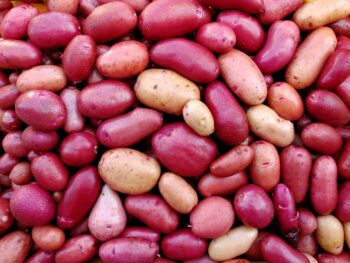
Not much information is provided in the seed catalog descriptions. What guidance that is provided is the usual catalog fare, which is to say, broadly worded. It looks like we can expect mostly red skin, white flesh types with mid-season maturities, with a flavor “somewhere between a yellow skinned type and a russet,” producing 4 to 5 tubers with a yield up to 20 ounces. As you can see from the pictures, that is not too far off the mark, although the tuber count that I obtained was much higher.
I got good germination from Clancy, using standard TPS starting conditions, at 83% (68 out of 82 seeds). The seeds were among the slowest to germinate of the 77 lines of TPS grown this year, with seedlings emerging between day 11 and day 17. I suspect that might have something to do with the fact that these seeds are pelleted, simply because that is the only thing that is really different. I generally only see germination that slow from really old seed and I’m guessing this seed is fresh since the variety was just introduced. So, if you have experience growing TPS, be patient with this one. I transplanted seedlings out to beds seven weeks after sowing, when most of them had three sets of true leaves.
Clancy seedlings two weeks after transplanting out
At transplant to the field, many of the seedlings had tuber development, so it appears that quite a few of them will have early maturities. The seedlings were a bit slow growing and prone to yellowing, compared to the generally hardy landrace types that I grow. I suspect that they were probably selected under fertile soil conditions and expect a richer soil than I gave them, so you might want to bring your soil fertility up to potato standards before growing this variety. I also don’t generally grow early varieties, so it isn’t a totally fair comparison. Early varieties are under a lot of pressure, particularly when grown from TPS, as they tend to start producing tubers before the plants are fully established after transplant. They did eventually green up and put on good growth. Some of them suffered fairly badly from early blight in the spring, but they all grew out of it as the weather dried out. Other than that, the plants were healthy and happy once they were established.
Clancy traits
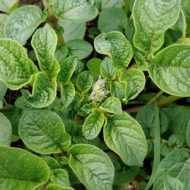 |
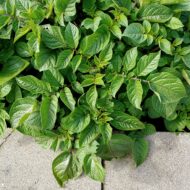 |
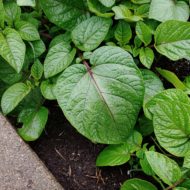 |
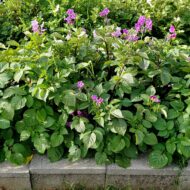 |
Plants were fairly compact, as expected with early varieties, mostly single stemmed and topping out at about 16 inches, with a few reaching over two feet. Most plants flowered, at least briefly, with mostly pink to red flowers. Most plants appeared to be male sterile, as you would expect for hybrid TPS (if the seed parent were not sterile, it would mostly self-pollinate instead). However, a few plants produced free pollen. I didn’t check to see if it was viable or not, but I would expect not. If it does have some fertility, that would make it more interesting for the hobbyist market, because Clancy is available in some places with poor access to TPS, like Canada. Based on the relatively small amount of pollen that I saw, if you want to save seed from this variety, you will still want a male fertile potato to pollinate. I collected about two quarts of berries from a 32 plant bed, which is better than you will get from most commercial tetraploids, but there is a lot of potato pollen floating around here.
Clancy flowers
Time from sowing to harvest was mostly between five and six months. Seeds were sown on March 12th, the first transplant was April 15th, and field transplant was May 15th. The first flowers were observed on June 19th, although most did not flower until the end of June. The first plants to die back were done and ready to harvest on August 28th. This is consistent with a maturity of about 100 days when grown from tubers, mid-season (or second early) maturity. My climate is cool and potatoes grow a little bit slower than they do inland, so some of these might be a week or two earlier in warmer climates.
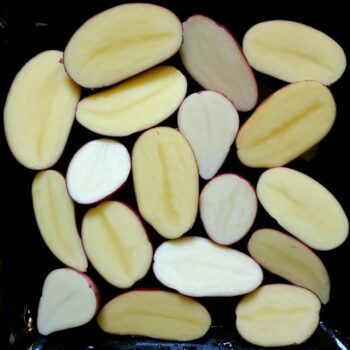
Tubers were mostly oblong, some round. The skin color was mostly pink to red, some with a bit of contrasting eye or eyebrow color. Skin ranged from smooth to netted. Flesh color was a mix of whites and light yellows. Tuber size was generally pretty good, with at least a few tubers reaching 3-4 inches on most plants. Yields were fair, with the average at 15 ounces, maximum at 37 ounces, and minimum of zero. Tuber counts tended to be high, with an average of 22, ranging zero to 41. Stolons were generally short, but about 10% had stolons exceeding two feet in length, usually in combination with smaller tubers. About a quarter suffered from scab and scab is not very common here, so I would classify those as pretty vulnerable. I haven’t had an opportunity to evaluate dormancy, which is very important in potatoes with early maturities, but I will update this post next spring. I kept three selections to try again from tubers next year.
Flavor was generally good, not particularly memorable, but certainly on par with grocery store reds. Some were better than others. I found the white flesh types had better flavor than the yellows. All of them were in a range of texture and flavor that I would be happy enough to eat. I didn’t taste every seedling. Texture was mostly all-purpose, neither waxy nor floury, but ranged from very dense and moist flesh to light and floury at the extremes.
The progeny overall were very similar to TPS progeny of Chieftain, so if you have grown Chieftain TPS and liked it, you would probably like Clancy as well. I don’t think Clancy is uniform enough that most people would want to grow a field of it from seed, but it should be easy enough to select a few good clones from a packet of seed. Clancy appears to be available in Canada, so it is a great option for you Canadians in search of TPS, although you will still need a pollinator if you want to save seed. Bottom line, if you are looking for an early red variety, particularly for use as new potatoes, Clancy seems like it would be worth a try. It is a good potato, with a high degree of uniformity, and it should be suitable for beginners looking to get some experience with true potato seeds.

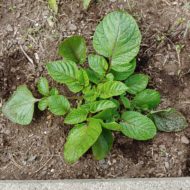
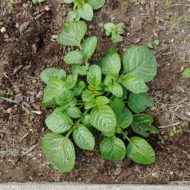
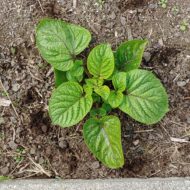
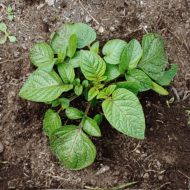
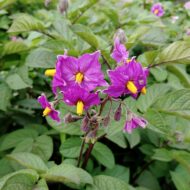
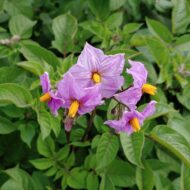
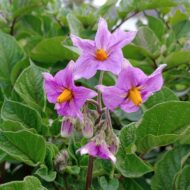
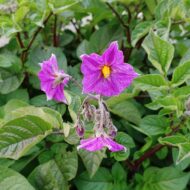
I have gardened for 50 years and never been more disappointed than in the Clancy TPS!
GREAT germination
SLOWWW, Transplant recovery
REPEATED blooming and seed production,
REFUSED to die back in October!
NASTY uber netted skins
SCAB from virgin soils
SMALL, 3-4 potatoes, plus 6-10 Marble sized time wasters.
Hi Leslie. Thanks for sharing your results. Have you grown potatoes from TPS before? The learning curve is rather steep and some of those problems are what beginners commonly report. It usually takes a few years to work out the kinks. It could also be that this is just not a line that is well adapted to your climate. I would still save some tubers to plant next year. You may find that it is a totally different experience.
Everything about potato breeding as I do can be seen on my channel. https://www.youtube.com/playlist?list=PLp6HfDNyVidCcnJMqjBORYgZW5RiT9lP2
That’s a neat channel – thanks for sharing!
just looking for more info on this clancy potato. My question is determent or not. not much info out there on this to be grown as most people don’t grow potatoes from seed. Thanks
It is determinate (early to mid season), but the terms indeterminate and determinate are largely meaningless with potatoes. They refer only to their flowering tendency. The similar and more useful concept with potato is maturity. Early and mid-season potatoes always have determinate habits. Late potatoes usually have indeterminate habits. If you are looking into determinacy because you have heard that it will make a difference in how the plant forms tubers, it won’t.
An indeterminate potato will continue to sprout tubers at each level, off the stem, as you backfill them. A Determinate potato will sprout all it’s tubers just once at one level. While it will continue to root, as you backfill it, you will not get additional tubers.
Therefore, as a determinate variety, not much trenching or bacfilling is necessary. If you just transplant it out and bury the stem like you would tomatoes, that should be sufficient. A nice thick layer (2-4″) of straw mulch on top should be used.
This is not correct. There is no major difference structurally in how indeterminate and determinate potatoes form tubers, just in how long they do. Here is a post on the subject:
Everything You Need to Know About Indeterminate Potatoes
This is my first time with TPS and I was only able to get the Clancy variety. 100% germination, slow to grow and still only about an inch and tiny and fragile when I planted them outside in grow bags. Then they took off and are now, near the end of August, still flowering and very green foliage. Flowers are purple. Should I wait until they die back to harvest or go by the number of days since seeding which is about 126 days ago. Central Alberta.
Wait until they die back for the best result. Two weeks after the tops die, the skin sets on the potatoes and they can be harvested in the best condition.
Do you have any idea what the red potato is that Clusius got a painting of? I keep searching and can’t figure out what it might have been. Probably some kind of andigena, I think, as that seems to have been what was coming with the galleons, but if so, how did the crews know to(?) use ones with long daylight times and not the more usual 12/12 from the Potosi area?
Certainly a variety that has been long extinct in Europe. Very few varieties survived the introduction of blight. Given the early date, it was most likely andigena, but we can’t rule out Chilean potatoes, since the Spanish first explored Chiloe in the mid 16th century. It is possible that the clone still survives in South America, but there would be really no way to know. Andean potatoes vary in their critical day length, but most of the early potatoes were short day, harvested relatively late in the year in the mild climates of Europe. A lot of potatoes were grown from seed in the early European period and there appears to have been some adaptation to longer day lengths. There was probably a mix of Andean and Chilean potatoes and very heavy selection of any introduced Andean potatoes for those that would tuberize at longer day lengths, since obligate short day varieties were likely to fail in much of Europe away from the coasts.
I will be planting some Yukon gems and red Pontiacs this season, but will also experiment with these Clancy TPS. Wondering if you have any info on best practices as they will be grown in 15 gallon grow bags. How many would you suggest growing per bag? Do these need to be planted at around three inches, covered, and then covered again as it emerges and until it reaches the top? Is it more advantageous to transplant rather than direct sow? I’m in 8b in South Georgia. I really appreciate an advice/direction you can provide.
Hi Troy. I would plant them as with any other TPS variety. 6-8 inches over the root ball or tuber is all you ever need. You can read instructions here:
Starting Potatoes from True Seeds
I would grow two plants in a 15 gallon container. You might find that potatoes do poorly in a grow bag in a warm climate. You may need to shade them during the summer.
Thanks for the reply, Bill. We’ll see how it goes.